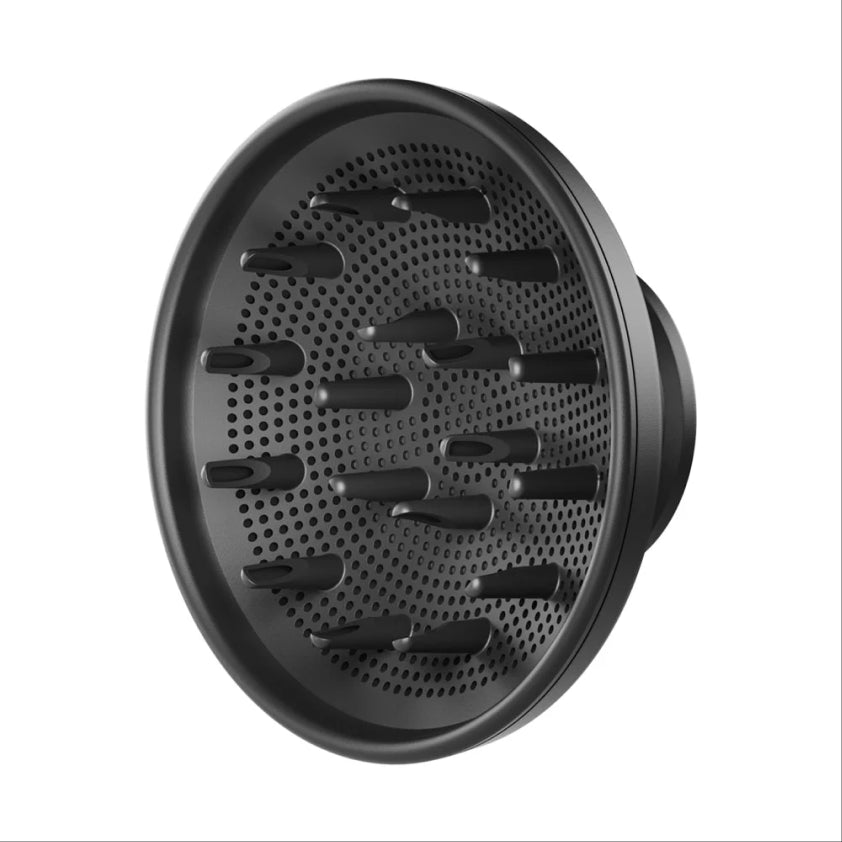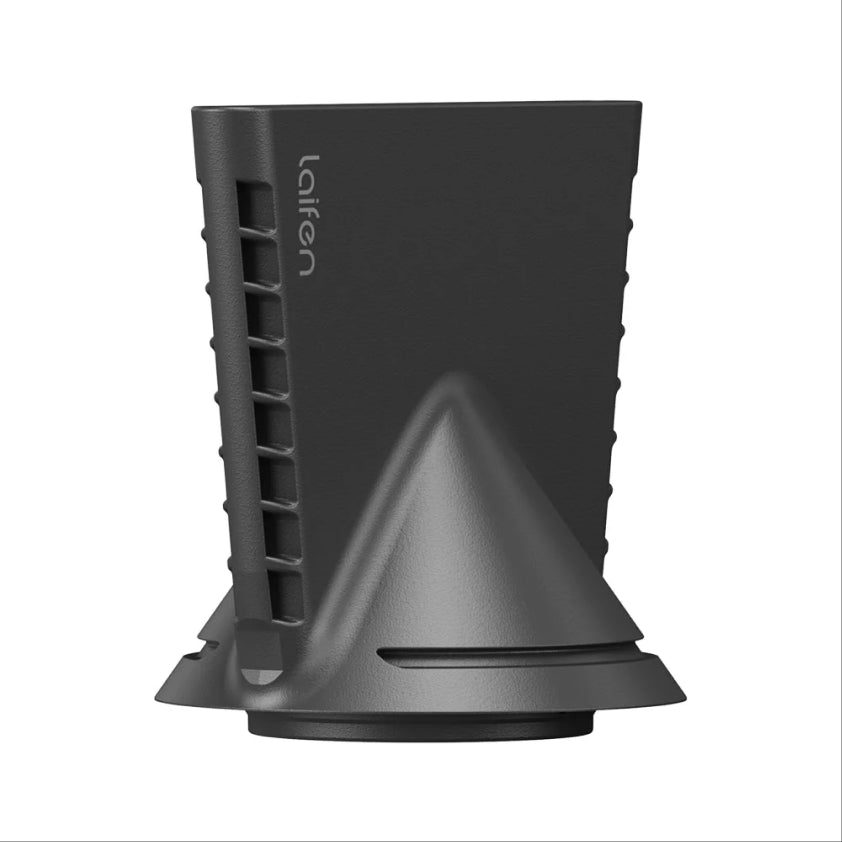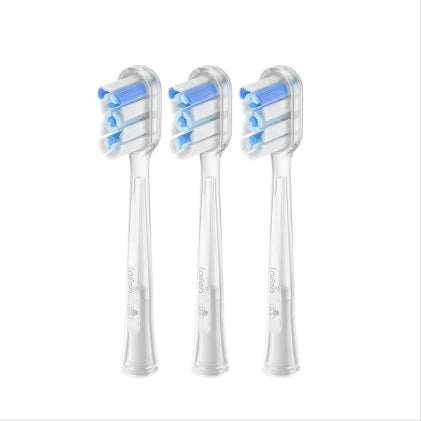
In this article
Dry hair is a real hassle, and I totally get it. It can pop up any time, whether the seasons are changing or just unexpectedly. In this article, we're diving into the reasons behind dry hair, spotting those signs, and chatting about how to fix dry hair and what you can do to keep it from happening to you.
Let's break down the why, recognize the red flags, and explore some practical steps to make sure your hair stays happy and hydrated. Because, honestly, who needs the drama of dry hair messing with your vibe? Let's get ahead of it and keep those locks looking lush.
Dry hair: Causes, symptoms, and treatments
Dealing with dry hair can be a real struggle, right? In this guide, we're going to unravel the whole dry hair mystery. From the reasons behind it—like those chemical treatments and heat styling—to spotting the symptoms, we've got you covered. Dry hair feels rough, gets frizzy, and can be a total hassle. We'll even share some pro tips and treatments to get your hair back in the game. Let's get those locks looking lush and healthy again!
What makes hair so dry?
Dry hair and scalp can be caused by various factors, which makes it difficult to identify the exact culprit. Some of the common reasons include chemical treatments, excessive use of hair products, and frequent use of heated styling tools.
Additionally, harsh shampoos and hot water during hair washing can strip natural oils, while exposure to environmental elements like sun, wind, and pollution can also contribute to the problem. Aging can also cause reduced natural scalp oil production, leading to dryness. If you are unsure about the cause of your dry hair, it is advisable to consult a dermatologist for a proper diagnosis before seeking a solution.

What are the symptoms of dry hair?
Dry hair often feels rough and lacks smoothness, making it prone to brittleness and split ends. It appears dull, tends to be frizzy, and is challenging to manage. Tangles are common, and it can develop excess static, leading to itchiness and a lack of elasticity. Having dry hair can eventually lead to significant damage, so here are some tips to save your poor hair from disaster, and make it look shiny and healthy again in no time.
What are the treatments for fixing drying hair?
In a natural approach to combat dry hair, consistent trims fend off split ends, while a nutrient-packed diet nourishes your locks from within. Opt for sulfate-free shampoo and a hydrating conditioner to gently cleanse and moisturize. Weekly deep conditioning treatments infuse essential moisture, and air-drying reduces heat-related damage. Embracing these practices holistically ensures a naturally revived and healthy mane. Want to know more details? Here are they!
10 tips to fix your dry and damaged hair naturally or with pro treatments
Struggling with dry and damaged hair? Fear not! In our guide, we've got your back. From the basics like regular trims to dietary tips for healthy hair, we cover it all. Learn the importance of a gentle, sulfate-free shampoo and the magic of conditioning. Discover the wonders of deep conditioning treatments, the benefits of air-drying, and the necessity of heat protectants.
Also, we'll guide you through the do's and don'ts of styling tools, the magic of leave-in products, and why limiting chemical treatments is key. Say goodbye to dry hair with our natural and professional tips!
1. Trim your hair regularly
Scheduling regular trims for your hair is more than just a routine—it's a game-changer in maintaining healthy and vibrant locks. When you get those regular snips, it's not just about keeping up with the latest trends; it's a strategic move to bid farewell to those pesky split ends. Trimming is the superhero that swoops in to rescue your hair from the clutches of damage, eliminating those frayed ends and preventing them from causing further havoc.
By routinely parting ways with split ends, you're essentially giving your hair a fresh start, encouraging healthier growth and ensuring a sleek, polished look that's ready to take on the world. So, make those trim appointments a priority and let your hair revel in the benefits of a regular cut—it's the secret to a flourishing mane.

2. Eat well
Ensuring the health and strength of your hair begins with more than just external care—it's deeply intertwined with what you put on your plate. A balanced and nutrient-rich diet is your ticket to vibrant, resilient locks. Picture your meals as a daily dose of nourishment for your hair, loaded with essential elements like proteins, the building blocks of strong and resilient strands.
Embrace omega-3 fatty acids, the superheroes that promote scalp health and contribute to luscious hair. Dive into a spectrum of vitamins and minerals, each playing a unique role in enhancing hair vitality.
So, load up on leafy greens, indulge in lean proteins, and savor the goodness of fruits and vegetables—a well-rounded, nutritious diet is the cornerstone of maintaining healthy and robust hair from the inside out. Your hair will thank you for the delicious care it receives from the dinner table!

3. Use a gentle shampoo that's right for you
Embracing the diversity of hair types means tailoring your hair care routine to meet individual needs. While each mane has its unique demands, a wise choice for many is a sulfate-free, moisturizing shampoo. This gentle alternative ensures a thorough cleanse without stripping away the natural oils essential for hair health. It's a safe bet for a broad range of hair textures and conditions.
Additionally, consider giving your hair a well-deserved break by avoiding daily shampooing. Overwashing can rob your locks of their natural moisture, leading to dryness and potential damage. So, aim for a balance that aligns with your hair's specific requirements, allowing it to revel in the benefits of a nourishing shampoo while enjoying the occasional hiatus to maintain its natural luster and resilience.

4. Condition regularly
Apply a hydrating conditioner after every shampoo. Choose a conditioner suitable for your hair type and use it after shampooing your hair. According to the American Academy of Dermatology, this will help to, "significantly improve the look of damaged or weathered hair by increasing shine, decreasing static electricity, improving strength, and offering some protection from harmful UV rays".
5. Deep conditioning
Indulging your hair in a weekly ritual of deep conditioning treatments or hair masks is like offering it a spa day—it's the VIP treatment your locks deserve. These heavyweight conditioning champions are poised to work wonders, infusing your hair with essential moisture, strength, and vitality.
The key to their efficacy lies in their intensive formulation, addressing the unique needs of your strands. Applying these treatments to damp hair is the secret sauce—it ensures that the rich concoction stays put, allowing the ingredients to deeply penetrate and nourish every strand.
The result? A long-lasting moisturizing experience that leaves your hair visibly rejuvenated, silky smooth, and ready to conquer the world. So, let your hair bask in the luxury of these indulgent treatments, and watch it transform into a mane of sheer brilliance and resilience.

6. Try to air dry
Let your hair air dry instead of using a hair dryer when possible. It doesn't need to be daily, but try not to use a hair dryer every day of the week as it will dry out your hair and high temperatures can potentially cause damage. You may be interested in the difference between air-dry and blow-dry.

7. Use heat protectant
Shielding your precious locks from the sizzling heat of styling tools is a non-negotiable step in the game of hair care. Whenever you embark on a styling session with heat tools, consider a heat protectant spray your trusty sidekick. Why? Picture this: these tools unleash temperatures that, without protection, can turn your hair into a battleground of brittleness, flyaways, and split ends.
A heat protectant spray acts as an invisible superhero cape, forming a barrier between your strands and the searing heat. It's the ultimate defense strategy, ensuring that your hair not only survives the styling process but emerges with its moisture intact, ready to flaunt a sleek, damage-free finish.
So, before you crank up those heat tools, give your hair the VIP treatment it deserves—a spritz of protection that keeps it resilient, glossy, and free from the perils of excessive heat.
8. Avoid heat styling
Navigating the realm of heat-styling tools requires a delicate balance between achieving your desired look and preserving the health of your precious strands. The golden rule? Minimize, minimize, minimize. While it's tempting to unleash the full power of your styling arsenal, consider a more tempered approach. If parting with your tools is not an option, moderation becomes the key.
Resist the urge to crank up the temperature to the max; instead, opt for a more moderate, medium heat setting. This strategic move minimizes the stress your hair endures, striking a harmonious chord between style and well-being.
Remember, for most hair types, a medium setting is your ally—it gets the job done with finesse, sparing your strands unnecessary suffering. So, wield your styling tools wisely, and let your hair revel in the best of both worlds—effortless style without compromising on its inherent resilience and radiance.
9. Use leave-in products
Transforming your post-shower hair care routine into a moisture-boosting ritual is a game-changer, especially for those seeking lusciously hydrated locks. Enter leave-in conditioners, serums, or oils—your hair's dream team for sustained nourishment.
Once you've bid adieu to the shower, seize the opportunity to lavish your damp tresses with these liquid elixirs. The goal? Amplifying and maintaining moisture levels in your hair. For the dry-hair aficionados, pay special attention to the mid-lengths and ends, as this targeted application yields optimal results.
By doing so, you're not just preventing moisture loss but infusing your hair with a protective barrier that withstands the elements. The end result? A head of gloriously hydrated and irresistibly touchable hair that exudes health and vitality. So, make this post-shower routine your daily dose of TLC, and let your hair bask in the luxury of these leave-in wonders.
10. Limit chemical treatments
In the quest for beauty, it's essential to tread lightly when it comes to harsh chemical treatments. While these treatments have the transformative power to make you look undeniably fabulous, moderation is the name of the game. Frequent indulgence in these chemical extravaganzas might momentarily enhance your aesthetic allure, but it's a double-edged sword that can, over time, lead to the silent torture of your hair.
The harsh chemicals, often used in coloring, straightening, or perming, can compromise the integrity of your strands, rendering them susceptible to damage, breakage, and overall distress. It's a delicate dance between achieving your desired look and ensuring the long-term health of your hair.
So, consider these treatments as occasional indulgences, allowing your hair the breathing room it needs to recover and maintain its natural resilience and shine. Striking a balance between style and hair health is the ultimate beauty mantra.

To wrap things up
Dry, damaged hair can be a nightmare and can cause real problems with your self-esteem if you're not looking your best. I hope that this article has provided you with the techniques and know-how to avoid drying your hair out. So do your best to stay away from bad hair days and keep looking your very best every day, with a head of full, healthy hair!
FAQs about fixing dry hair
Welcome to our Drying Hair FAQs! Wondering about the best shampoo for dry hair? Olaplex No. 4 Bond Maintenance Shampoo is a top choice. Combat oily hair with Neutrogena T/Sal. Learn the correct way to blow dry, treat dry scalp and oily hair, and discover if a hair-drying towel is necessary. Let's dive in!
Q1. Which is the best shampoo for dry hair?
There are many options when shopping for a shampoo that combats dry hair, but there is one that stands out as being recognized by many as a reliable choice. That is the reparative, hydrating, and nourishing Olaplex No. 4 Bond Maintenance Shampoo.
Q2. Which is the best dry shampoo for oily hair?
There are shampoos for every type of hair, and every type of hair problem. When talking about a product that is designed specifically for oily hair, Neutrogena T/Sal Therapeutic Shampoo is a very strong contender for the best on the market. Best paired with a nourishing conditioner to ensure your scalp doesn't get too dry after shampooing.
Q3. What is the correct way to blow dry hair?
Step 1. Start with clean, slightly dry hair; don't start blow drying when your hair is still sopping wet.
Step 2. Use a premium hair dryer with adjustable settings and a nozzle for your desired result.
Step 3. Divide your hair into sections, and start with low to medium heat and low speed.
Step 4. Hold the dryer about 6 inches away from your hair and use a brush to style your hair as you dry it.
Step 5. Finish with a blast of cool air to set your style and then apply a finishing product for shine and frizz control.
(If you have wavy or curly hair and require a diffuser to dry your hair, check out the ultimate guide to using a hair diffuser for some tips).
Q4. How to treat dry scalp and oily hair?
Q5. Do I need a hair-drying towel to help repair my dry hair?
While not absolutely necessary, a hair-drying towel can help dry your hair without causing damage, especially if you have dry hair. These towels are designed to be gentle and absorbent and they can assist in reducing frizz and breakage.
You can also achieve similar results with a soft microfiber towel or by patting your hair gently. The main point is to be gentle when drying your hair to prevent further damage to dry hair.
























